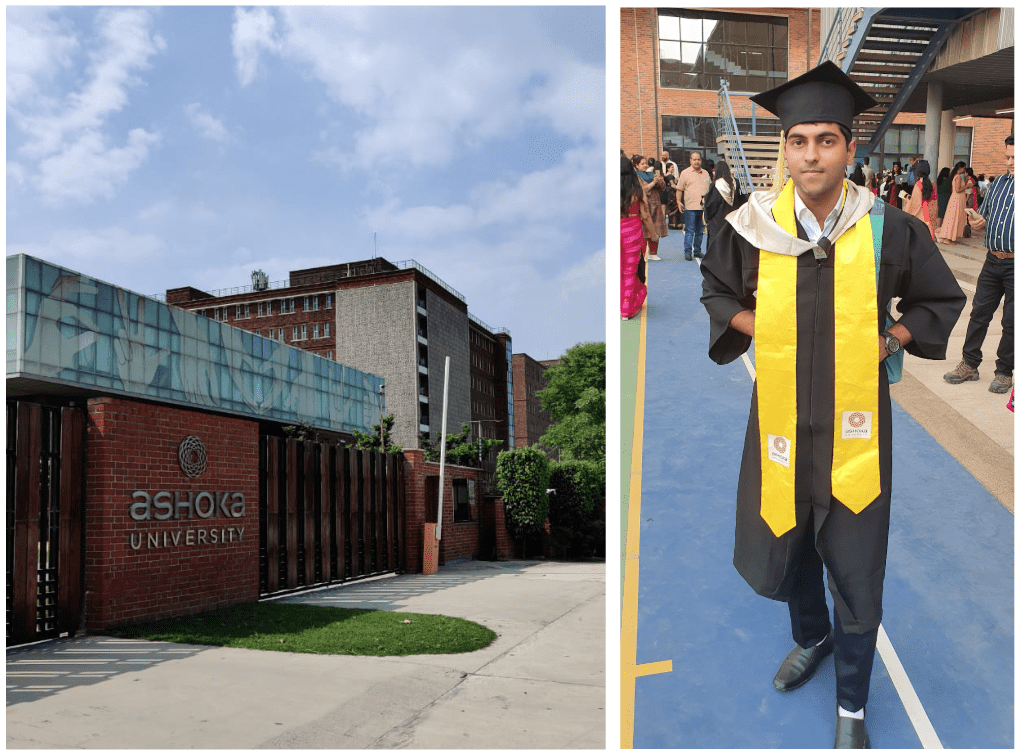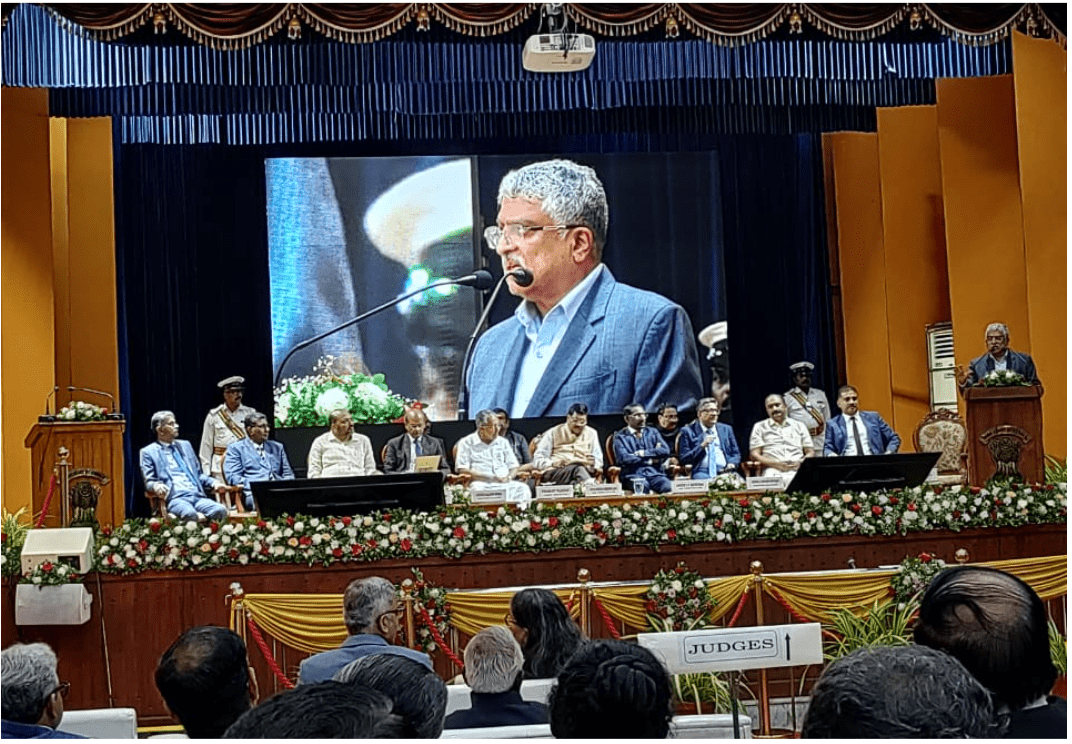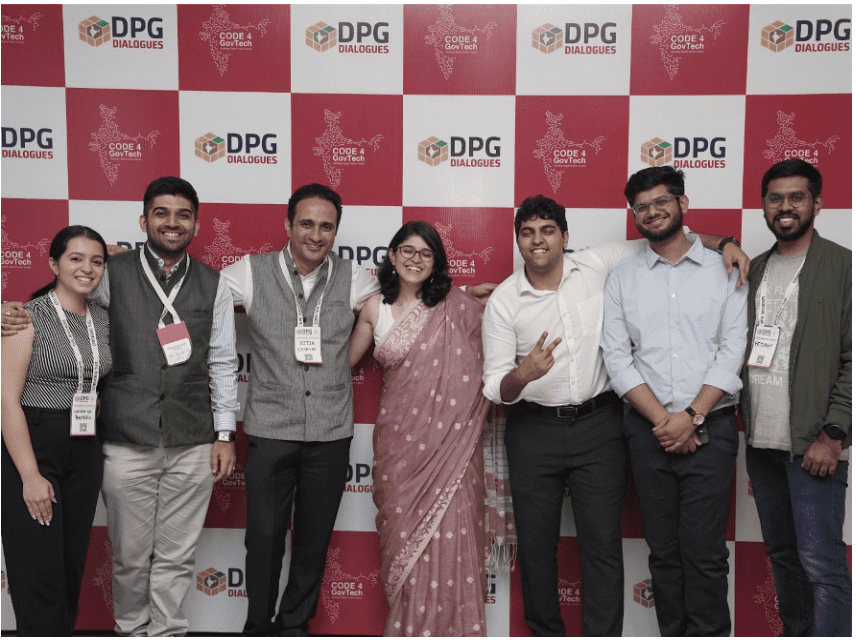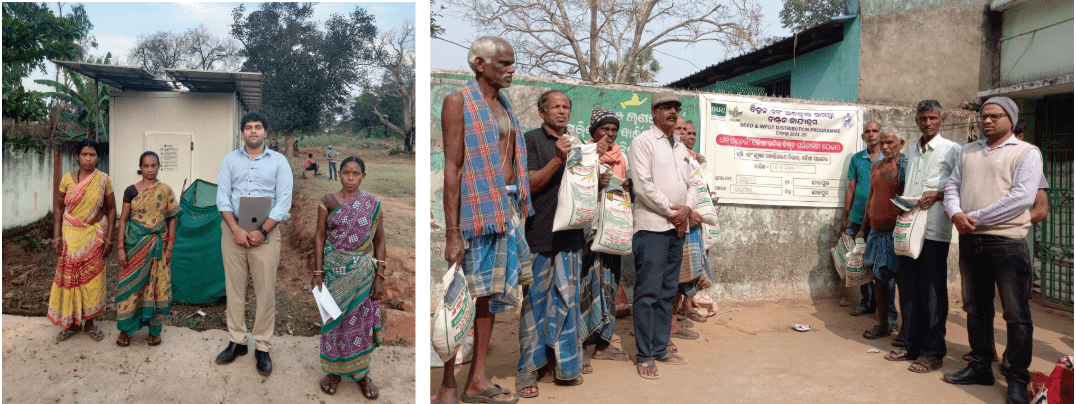For much of my early life, I lived in a bubble. Born and raised in Mumbai, my world was a 20-kilometre radius that was bounded by the sea, local trains, and the self-assured certainty that everything I needed to know could be found in scientific books or debates. Ashoka University was my first real step outside this orbit. It placed me in the middle of Sonipat, Haryana and exposed me to ideas of social justice that very much shaped the kind of person I wanted to be. That’s where this “bug for impact” was planted in me. I immersed myself in academia, convinced that my pathway to creating real impact lay somewhere between lectures, research papers, and possibly, a PhD.
But somewhere along the way, questions began to outpace answers. I wasn’t sure what I wanted to study for the rest of my life, and the need for "perfect knowledge" before making a decision paralyzed me. I didn’t know what kind of academician I wanted to be or if I wanted to be one at all.
With hesitation, I sat for campus placements, still thinking I'd return to academia in a year or two. Samagra seemed like a logical step seeing as it offered the opportunity to create large-scale system reform through governance along with the rigour and standards required for me to make a decision about whether being a “salaryman” was something I wanted to do long-term. I didn't know it at the time, but this was the beginning of something transformative.
My Journey in Samagra
If I had to describe my two years at Samagra in one word, it would be: “varied”. I worked on three completely different programs, each with a massive, ambitious goal – and each stretching me in wildly different ways.
The first was PUCAR, where we were trying to transform how courts in India resolve disputes. Our goal was to set up pilot courts for two specific case types with a reimagined life cycle of case resolution, build reusable technology for them, and create a playbook that could be scaled across the country. I found myself reimagining parts of how a case moves through the system and translating that into product designs for these new-age courts. One of my proudest moments was seeing those designs come to life in a real courtroom in Kollam, Kerala. It was the first time I truly felt what it meant to build for the public.
Next came Code for GovTech, a completely different beast. This time, the goal wasn’t to build a product, but a community around open-source technology that improved lives. I led the 3rd edition of the Dedicated Mentoring Program (DMP), where over 100 contributors, selected from more than 2,500 applications, worked with 42 mission-driven organizations to contribute code that impacted lives. It was my crash course in operations, storytelling, partnerships, and creating something that others could believe in and build upon.
Finally, I worked in KONNECT, which aims to improve the Agri-GDP per capita in Odisha. Here, I was managing tech platforms that touched the lives of over 90 lakh farmers. I also worked with private-sector partners to position Odisha as a hub for agricultural innovation in India. This was the most complex environment I’d worked in—layers of stakeholders, tech & data systems, and last-mile challenges. I could feel the weight of the work, but also its potential.
Three programs. Three sectors. Three completely different definitions of what it means to make an impact. And in each, I was given the space to own, build, and learn. Looking back, it’s hard to believe how much terrain I got to cover in such a short time.
What I’m taking with me
Condensing messy, human experiences into clean bullet points may sound absurd but in consulting, we call that “Monday” so here are my key learnings from my time at Samagra:
1. Ownership of outcomes, not just tasks is the key to falling in love with work
At Samagra, I was never just executing a task, I was responsible for the outcomes of my work. I believe this to be the best way to create buy-in for yourself for any work you do. This buy-in leads to developing the mindset of “doing whatever is necessary” to drive outcomes. This leads to high performance. An enabling factor for creating this high ownership sentiment is high trust by your managers which is something Samagra excels at.
2. Successfully managing Senior Stakeholders is rooted in confidence, clarity of content & clear communication
At Samagra, I sat across from CXOs and Secretaries & Directors (senior IAS officers) every week. This taught me how to be prepared, how to listen, how to be respectful without shrinking. Clarity of content, confidence in my own ideas and clear communication allowed me to be on an equal footing with stakeholders as a thought partner in the truest sense.
3. A Steep Learning Curve is the key to scratching the itch of personal and professional growth
Every time I felt like I was comfortable at Samagra, I was pushed out of my comfort zone. This happened through two ways: (a) increasing responsibilities and (b) exposure to a variety of work. Every few months, when I sat and reflected at how much I had grown, I was left astounded. I got addicted to rapid growth; only a steep learning curve could keep me satisfied.
4. Movement (with clarity) > Perfection
In academia, we polished until things were “right.” At Samagra, I learned to ship fast, iterate faster, and keep moving. The world doesn't wait for perfect—movement, with clarity that it is the right decision given the current information, is what changes lives. This was the biggest mindset shift for me, especially considering I once needed a research paper’s worth of information just to decide what to order for lunch.
From Unsure to Unstoppable (Kind of)
When I joined Samagra, I was still figuring things out. I thought I’d give this whole “real-world work” thing a shot and maybe head back to academia after a year. I definitely didn’t expect to fall in love with the chaos, the scale, and the relentless pace of constant growth.
But somewhere between courtroom visits, sprint calls with open-source contributors, and conversations with IAS officers in Bhubaneswar, I changed. I stopped waiting for the perfect moment, the perfect plan, or the perfect version of myself. I just started… moving. And with every step, I discovered what I was capable of.
I’m walking out of these two years with far more than work experience. I’m walking out with a radically different relationship to ambiguity, ownership, learning, and what it means to drive change. No, I still don’t have all the answers (and probably never will). But now, I don’t feel stuck because of it.
Because if Samagra taught me anything, it’s this: you don’t need to have everything figured out to begin. You just need to start—with intent, with clarity, and with the belief that you’ll find your way as you go.
And honestly? That feels like enough to take on the world.




